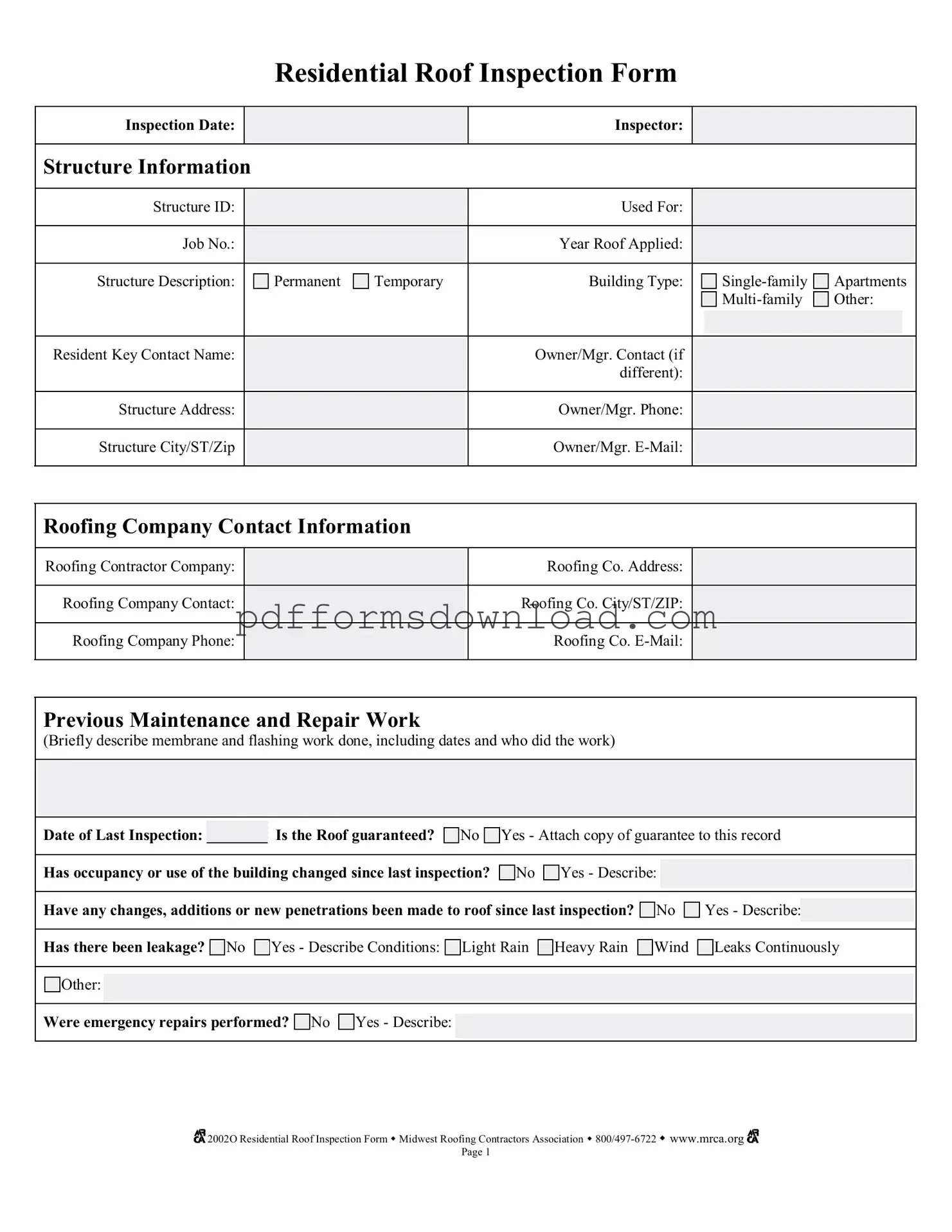What is the purpose of the Roof Inspection form?
The Roof Inspection form is designed to systematically assess the condition of a residential roof. It helps identify any existing issues, document previous maintenance, and ensure that the roof meets safety and performance standards. This form serves as a crucial tool for homeowners, property managers, and roofing contractors to keep track of the roof’s health over time.
Who should fill out the Roof Inspection form?
The form should be completed by a qualified roofing inspector or contractor who has experience in evaluating roof conditions. It can also be filled out by property managers or homeowners who are familiar with the roof's history and maintenance. Accurate information is essential for effective assessment and follow-up actions.
What information is required on the Roof Inspection form?
Key information required includes the inspection date, inspector’s name, structure details, roofing company contact information, and a summary of previous maintenance and repairs. Additionally, details regarding any changes to the building’s occupancy or roof structure since the last inspection must be provided. This comprehensive data helps create a complete picture of the roof’s condition.
How often should a Roof Inspection be conducted?
It is recommended to conduct a roof inspection at least once a year, especially after severe weather events. Regular inspections help catch potential problems early, which can save homeowners from costly repairs down the line. If the roof is older or has experienced significant weather damage, more frequent inspections may be necessary.
What should I do if the inspection reveals issues?
If the inspection identifies problems, it is crucial to address them promptly. Depending on the severity of the issues, you may need to contact a roofing contractor for repairs or maintenance. Ensure that any necessary actions are documented on the Roof Inspection form for future reference. Taking swift action can prevent further damage and extend the life of your roof.
Is there a warranty or guarantee associated with the roof?
The form allows you to indicate whether the roof is guaranteed. If it is, attaching a copy of the guarantee to the record is essential. Understanding the terms of any warranty can help you make informed decisions regarding repairs and maintenance, as well as provide peace of mind.
What types of conditions are assessed during the inspection?
The inspection evaluates various conditions, including the roof deck, walls, exterior elements, drains, and penetrations. Each area is rated as good, fair, or poor, with specific codes for different types of damage or deterioration. This thorough assessment ensures that no critical areas are overlooked during the inspection process.
How can I keep a record of the inspection?
It is important to keep copies of the completed Roof Inspection form along with any photographic evidence or additional documentation. This historical record can be invaluable for future inspections and maintenance planning. Regularly updating this record will provide a clear timeline of the roof's condition and any actions taken.
